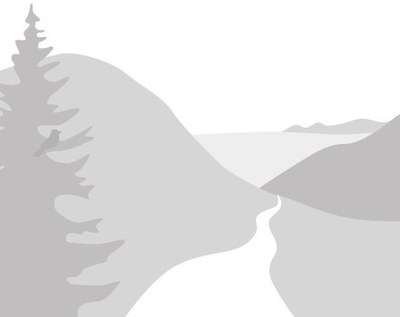Diamond Peak Wilderness
The 52,611-acre Diamond Peak Wilderness in Deschutes and Willamette National Forests offers numerous recreation opportunities, from hiking and backpacking, to fishing in its numerous lakes, to climbing Mount Yoran and Diamond Peak. Diamond Peak is also a backcountry ski destination in late spring-early summer. The Pacific Crest Trail passes through the wilderness area on the east side of Diamond Peak.
GETTING THERE
The nearest major cities to the Diamond Peak Wilderness are Eugene (to the northwest) and Bend (to the northeast). From both Eugene and Bend the wilderness is approximately a 2-hour drive. Other nearby towns are La Pine and Crescent on the east side of the wilderness area.
On the trail
- Diamond Peak Trail #3699 is the main north/south trail on the west side of the Diamond Peak Wilderness.
- The Pacific Crest Trail is the main north/south trail on the east side.
- Blue Lake Trail #3645 is a short 1 mile journey to Blue Lake, one of the largest and prettiest lakes in the Diamond Peak Wilderness, where excellent camping and fishing can be found. The trail continues beyond Blue Lake and ends at its junction with the Diamond Peak Trail, allowing for further exploration to other destinations, such as Happy Lake.
- Summiting Diamond Peak, while not a technical route, becomes an off-trail scramble and depending on the trailhead and route chosen, varies from 10-12 miles in distance. The Summit Lake Pacific Crest Trail trailhead and the Rockpile Lake trailhead are the usual starting points.
- Circumnavigating Diamond Peak is possible from various starting points and totals approximately 23 miles with 4,000 feet of elevation gain. The loop can be done as a backpack or as a trail run by ambitious runners. One recommended route is to go counterclockwise, starting at the Diamond Peak North trailhead, which offers the shortest connection to the Diamond Peak trail. Once on the Diamond Peak Trail head south toward Rockpile Trail and Marie Lake; connect to the Pacific Crest Trail south of Diamond Peak; then at the north end of the wilderness use the Mount Yoran Trail to return to the northwest corner of the wilderness area and finish the loop.
ACTIVITIES
SPRING-FALL
Visitors can enjoy hiking and backpacking on numerous trails including the Pacific Crest Trail from late spring, once the snow has melted, throughout the summer and fall. It is possible to circumnavigate Diamond Peak on trails, a journey of approximately 23 miles with 4,000 ft. of elevation gain. Climbers can tackle Mount Yoran (7100 ft.) and scramblers can tackle the non-technical Diamond Peak (8744 ft.) Skiers also aim for Diamond Peak, which offers over 4000 skiable vertical feet, in late spring through early summer. Other activities in the vicinity include car camping at nearby Odell Lake and Crescent Lake, both of which are outside the wilderness area's boundaries.
WINTER
Diamond Peak Wilderness is difficult to access in winter due to road closures. Skiers hoping to ski Diamond Peak typically aim for late spring to June when the roads begin to open and the distance that must be traveled on foot to the peak is reduced. The northern edge of Diamond Peak Wilderness can be reached from Gold Lake Sno-Park on Oregon Route 58.
NOTES
- A wilderness self-issue permit is required for all visits
- Find an overview map here
- For Deschutes National Forest, Diamond Peak Wilderness is located within the Crescent Ranger District Office
- For Willamette National Forest, Diamond Peak Wilderness is located within the Middle Fork Ranger District
- Gold Lake Sno-Park; Oregon sno-park permit required November 1-April 30
- There is no available avalanche forecast for the Diamond Peak Wilderness area; Central Oregon Avalanche Center may have relevant weather information.
- Suitable Activities: Backcountry Skiing, Backpacking, Climbing, Day Hiking, Scrambling, Snowshoeing, Trail Running
- Seasons: Year-round
- Weather: View weather forecast
- Land Manager: Deschutes National Forest
- Parking Permit Required: Northwest Forest Pass
- Recommended Party Size: 12
- Maximum Party Size: 12
- Maximum Route/Place Capacity: 12
This is a list of titles that represent the variations of trips you can take at this route/place. This includes side trips, extensions and peak combinations. Not seeing a title that fits your trip? Log in and send us updates, images, or resources.
- Diamond Peak Trail
- Blue Lake Trail
- Diamond Peak via Pacific Crest Trail
- Diamond Peak via Rockpile Lake
- Diamond Peak Circumnavigation
There are no resources for this route/place. Log in and send us updates, images, or resources.
